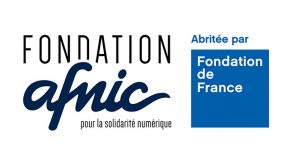Due to their entry cost, their registration formalities and the in-house work required for their roll-out, dot brands are frequently considered “premium” TLDs only accessible to big groups. What’s more, if we take the list of the brands that own their TLD, CAC 40 and very large companies account for a large number of entries. As reputed ambassadors, these brands have inevitably become digital pioneers in their sector. But what about mid-sized companies?
If truth be told, it would be simplistic (and most of all inaccurate) to ascribe the opportunity of a dot brand solely to companies that exceed a certain size and turnover. In reality, the question is much more subtle.
The example of Aquarelle and Lancaster
Specialising in home flower delivery, the Groupe Aquarelle.com – with 120 employees in 2021 – has made its brand TLD a pillar of its online presence. Registered in 2012, .aquarelle now covers 40 domain names. Although its corporate aspect is entirely contained within corporate.aquarelle, its floral art creation tutorials are available on art-floral.aquarelle, its recent orchid collection is presented on orchidee.aquarelle, its e-store is accessible via livraison-fleurs.aquarelle, etc. Each space has a concise, meaningful URL that can be adapted in several languages (enviar-flores.aquarelle, flower-delivery.aquarelle, etc.) allowing the brand to respond to requests from Internet users around the world organically and as adeptly as possible. Given that it is the only one able to register new domain names under .aquarelle, the brand contributes to protecting itself from risks of cybersquatting. The concept of a TLD has been successfully incorporated into the development strategy of the group, which now has an entirely digitalised global business model.
Lancaster Paris, a French leader in leather goods, also has its own custom TLD. To date, 6 .lancaster domain names redirect to the brand’s website, including luxe.lancaster, bag.lancaster and paris.lancaster. These three domain names respectively echo the brand’s standing, its flagship product (bags) and the fashion capital where it designs and develops its collections. Lancaster thus has a transparent positioning and an international appeal just from its URL. At the same time, this branded suffix is a direct synonym of authenticity for users, leaving no doubt as to the conformity of the products referenced on its website. In addition to promoting a now phygital sales model, the .lancaster TLD contributes to protecting the brand and its products on the Internet.
Transversality, agility and human scale: the strength of SMEs when it comes to a high-potential custom TLD project
Registering a dot brand means carrying out considerable preparatory work, given that the goal is to subsequently migrate a digital identity to the new TLD. A major undertaking, which involves numerous teams that need to work together within a given time frame.
In 2012, the time allowed by ICANN between the official announcement of the call for applications and the deadline for registrations was 6 months. Agility is therefore key to applicant companies, which need to put their employees’ skills and time to best use. The cross-cutting approach of the departments in human-scale structures is an asset in this context where it is vital to act quickly and precisely. It encourages the construction of a collective project based on a domain, in which the organisation commits to a project for the concrete use of its TLD. The fact that SMEs do not necessarily have someone dedicated to managing their domain names can be a real advantage. Decision-making processes are also simpler and less time-consuming than in more pyramid-type organisations.
During the opening round in 2012, numerous big brands registered their custom TLD with the main aim of protecting against the risks of cybersquatting. Some dot brands have still not been rolled out, often because the application was handled by a single department, rather than transversely, which did not result in the creation of a real use project. Clearly, the cost of a dot brand represents a greater investment for an SME compared to larger companies; the probability that they will fully take it on board and incorporate it into their online presence is therefore greater.
A dot brand: the sign of a successful digital transformation
A custom TLD can be of interest to companies of different sizes in any business sector that approach the digital transformation as a cross-cutting topic that is embraced as a central part of their considerations.
Whether they want to showcase their products and services online, certify their messages or develop an umbrella brand strategy, they must be able to understand the concept of a TLD as a strategic vector to set themselves apart. The prospects for the use of a dot brand are thus numerous for the registry company which, in addition to promoting all of its actions, can streamline expenses and proudly demonstrate its ability to innovate.
A custom TLD is primarily aimed at companies looking to invest in their digital strategy in the long term. More than a simple acquisition, it is an investment that involves demonstrating a forward-looking vision and agility; an SME can therefore be an ideal candidate for a dot brand.




